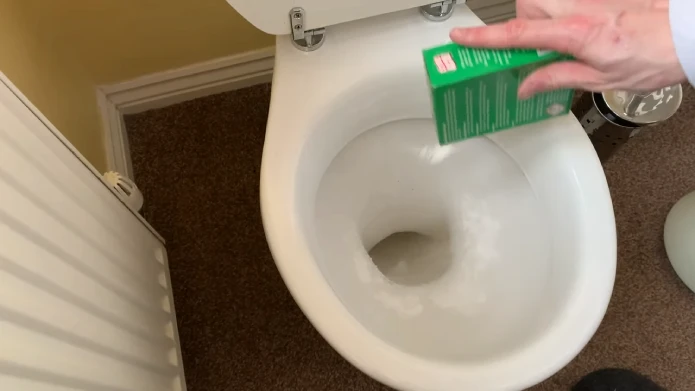Last Updated on August 28, 2023
Toilet bowl cleaners are essential to any domestic cleaning regimen, keeping toilets free from bacteria and germs that can build up. But with their potent formulas, is it possible they could cause damage to delicate porcelain fixtures? Discovering the answer may be vital to protecting your home’s hygiene and aesthetic appeal.
Undoubtedly, these highly corrosive chemicals can damage your bathroom fixtures and grout. Containing hydrochloric acid and chlorine bleach, the fumes from toilet bowl cleaners can be corrosive to metal.
Most toilet bowl cleaners also contain special additions like surfactants and pH buffers to help reduce surface tension, making cleaning up a breeze while keeping acidity levels consistent for top-notch performance.
Taking proper precautions when using toilet bowl cleaners is essential to prevent your bathroom from becoming a disaster zone. Check out this blog post for tips on keeping yourself and your bathroom safe while cleaning.
How to Use a Toilet Bowl Cleaner Safely?
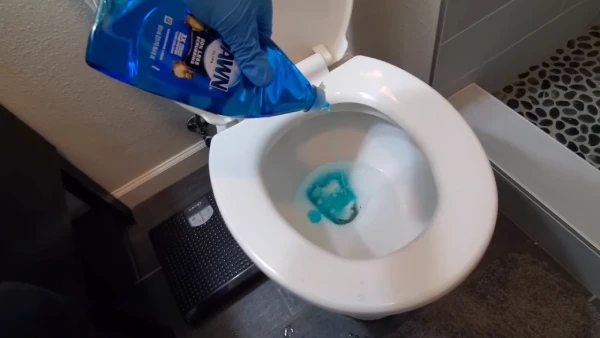
Using a corrosive toilet bowl cleaner is an easy step in keeping your bathroom clean and hygienic. To ensure you use it correctly, here are some rules for using it:
Rule No 01: Prepare the Toilet Room
Before beginning to use a toilet bowl cleaner, it is vital to prepare the room properly.
- First, open all windows and doors to ensure proper ventilation throughout the room. This will help prevent any fumes and vapors from accumulating in an enclosed area.
- Also, remove any items from the immediate vicinity of the toilet bowl which may be affected by the use of hydrochloric acid or chlorine bleach, such as rugs, bath mats, candles, etc.
- It is also advisable to place a fan near the work area pointing away from you to draw out any potentially dangerous fumes.
Rule No 02: Prepare Yourself
When working with corrosive toilet bowl cleaners, it is extremely important to wear appropriate safety gear. At a minimum, this means wearing gloves, protective eyewear, and a mask (if desired).
To be extra safe, you can also put on Personal Protective Equipment (PPE) such as a long-sleeved shirt and pants, closed-toe shoes with non-slip soles and rubber boots, and an impermeable coverall or apron.
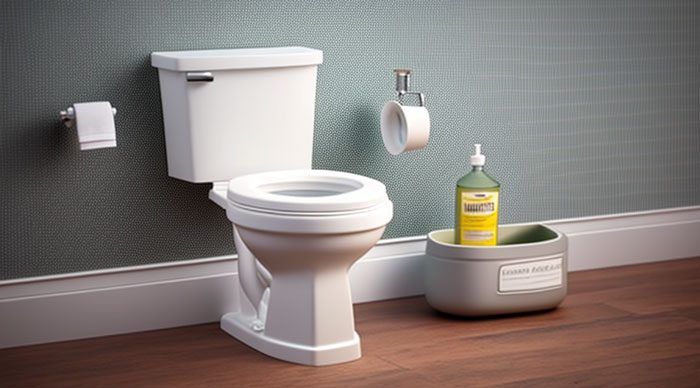
Also, make sure that your skin is not exposed at all times when handling this type of cleaning product. Before starting work, ensure your hands are clean and free of dirt or oils that could react with corrosive components in the cleaning product.
Finally, always keep corrosive cleaners out of the reach of children and pets to avoid any accidents or ingestion of these products.
Rule No 03: Apply the Toilet Bowl Cleaner
Squeeze or pour an appropriate amount of toilet cleaner into your toilet bowl. Read the instructions on the bottle carefully to identify how much cleaner is needed for your task, as well as what type of toilet bowl needs to be cleaned (e.g., porcelain, stainless steel).
Be sure to use cleaner if you are dealing with a heavily stained surface, but less if you are simply trying to maintain a clean toilet bowl. It may also be necessary to add more water if you are going to use more than one cleaning product at once.
Once you have applied an appropriate amount of cleaner, wait according to the instructions on the bottle before flushing it down the toilet. This waiting time allows for optimal cleaning power and will help prevent possible damage or stains caused by the over-application of the product.
Finally, when done with the application process, it is advised that you immediately wash off any excess product from surfaces with water before returning the bathroom to its normal state.
Rule No 04: Flush the Toilet
Once your allotted wait time has passed according to product instructions, then you can flush your toilet with confidence, knowing that no further damage will occur from these hazardous chemicals.
If there are still traces left after flushing, you’ll have to scrub with a toilet brush to finish cleaning before flushing again. You should be careful with this step since many brushes are made from low-quality plastic. Using them too often could damage them over time and make them unsuitable for some chemical agents.
Always refer to the product instructions for more information about how best to handle specific cases such as this one.
Rule No 05: Dispose of or Store Leftover Products Appropriately and Safely
When finished cleaning the toilet bowl with corrosive cleaner, rinse out any leftover product from the container with plenty of water before disposing of it into an appropriate trash receptacle.
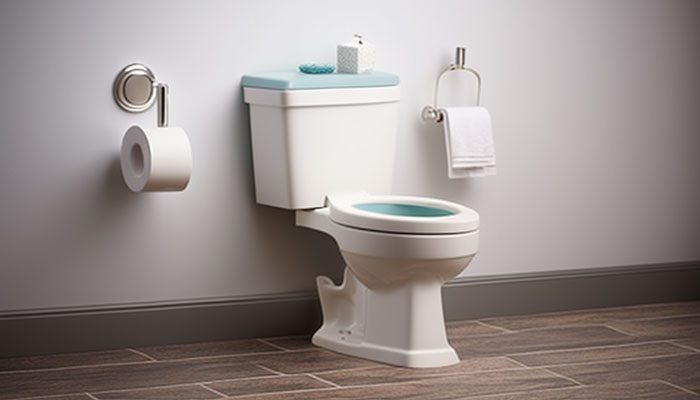
If storing for future use, remove all protective wearing, including gloves, eyewear PPE, and mask, before handling any leftover product. Afterward, wash your hands thoroughly with warm water and soap. Store unused material in its original container & securely seal it, place it away from children in a cool, dry place outdoors & out of reach from pets.
Listed below are some popular toilet bowl cleaning solutions:
Toilet Bowl Cleaner Gel
This is a potent toilet bowl cleaner gel that has a thick, non-abrasive formula and is safe for use on all plumbing fixtures. The gel contains an advanced blend of powerful surfactants and detergents that help to break down tough stains and dirt while leaving a refreshing scent.
It also helps to prevent the build-up of limescale, rust, and other minerals on the bowl. And this cleaner gel is easy to use. Just one application can leave your toilet bowl sparkling clean in no time.
Toilet Bowl Cleaner with Bleach
This bleach-based cleaner provides superior cleaning power and leaves behind a fresh scent. The unique bleach formula helps to dissolve tough organic soils like dirt and grime, as well as eliminate odors.
Also, it helps to reduce the risk of germs and bacteria spread from the toilet by killing 99% of germs on contact. With regular use, this product can help keep your toilet spotless and smelling great.
Automatic Toilet Bowl Cleaners
These automatic cleaning products are designed to make keeping your bathroom fresh and clean easier than ever before. They provide an easy, hassle-free way to keep your toilets smelling fresh without any scrubbing or manual cleaning necessary.
The unique formula works continuously to remove stains and dissolve soap scum while sanitizing your toilets using natural ingredients like essential oils or probiotics. Plus, most of these cleaners come with a refreshing scent that will help make your bathroom feel more inviting each time you enter it.
What Happens If Toilet Bowl Cleaner Touches Your Skin?
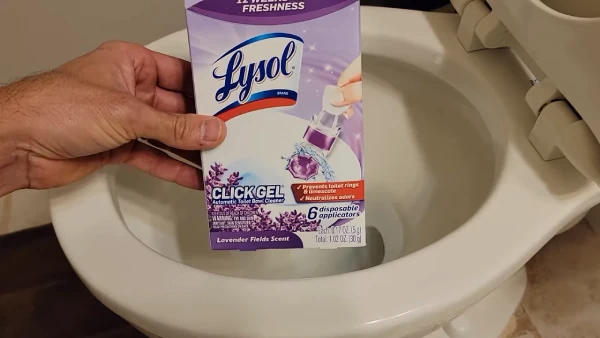
When toilet bowl cleaner comes in contact with your skin, it can cause irritation and burns. Ingredients such as hydrochloric acid and chlorine bleach found in many traditional cleaners are highly corrosive. These chemicals can leak through the skin, resulting in redness or a burning sensation.
In severe cases, they may even damage your eyes if it gets into them. One type of toilet bowl cleaner particularly hazardous is bleach tablets, which contain high concentrations of corrosive substances that can cause significant chemical burns to the mouth, eyes, skin, and gastrointestinal tract.
Why Shouldn’t You Put Cleaner In Your Toilet Tank?
Putting cleaner inside the toilet tank can be detrimental to your plumbing system. Household cleaners used for cleaning toilets contain various solvents that can damage rubber gaskets and seals inside the tank, leading to leakage, which could make your toilet run continuously and unnecessarily increase your water bill.
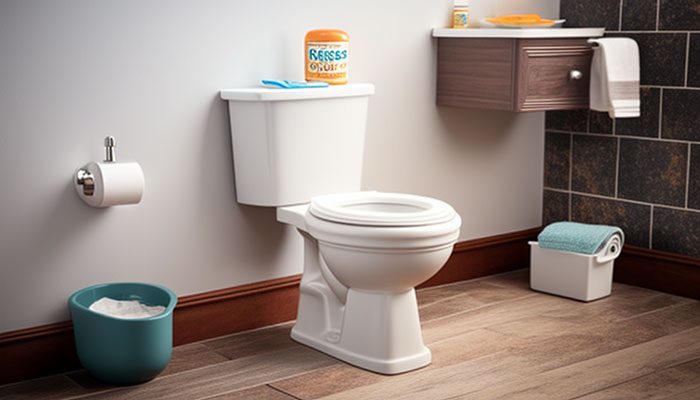
Also, these cleaners also tend to get stuck in the small crevices of pipes over time and corrode them from within, causing further deterioration of the plumbing infrastructure.
Does Toilet Bowl Cleaner Damage Pipes?
Yes, toilet bowl cleaners can damage pipes due to their corrosive nature. The longer a chemical stays in contact with a pipe or other hardware, the more likely that it is going to leave behind residue and slowly degrade the material over time.
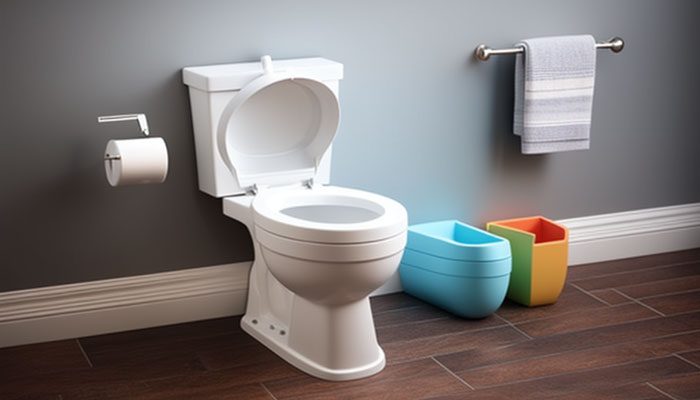
This is especially true for acidic-based cleaning agents like vinegar which can have a long-term effect on metal plumbings by weakening their structure and making them more prone to leakage or bursting down the line.
Should You Use Toilet Bowl Cleaner Every day?
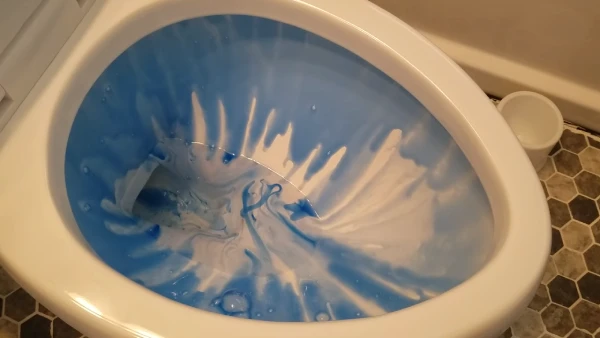
Regular cleaning of your toilet bowl is essential for preventing the buildup of germs and bacteria from dirty water in the bowl. The Good Housekeeping Institute recommends cleaning once a week if possible, but for households with small children or those who suffer from illness caused by bugs, a daily cleanse may be necessary.
A quality, non-corrosive cleaner should be used when cleaning your toilet bowl to reduce any risk of irritation or further damage. Be sure to follow product instructions regarding safety protocols when dealing with potentially dangerous chemicals like those found in conventional toilet cleaners.
Keep Your Toilet Bowl Looking Great For Years
Regarding your bathroom fixtures and grout, caution goes a long way. Simply use the best toilet bowl cleaner free of harsh chemicals, and you can easily keep your fixtures looking great for years. Follow the steps mentioned in this article, such as using protective gear to ensure your safety and the longevity of your surface.
So don’t forget protective gloves and proper ventilation during cleaning times. These are essential steps for creating an environment that’s safe from damage. And when you’re finished, be sure to store or dispose of leftover products with due care. With these measures in place, it’s easier to have a sparkling bathroom without a sweat.

